
In law enforcement, a sting operation is a deceptive operation designed to catch a person attempting to commit a crime. A typical sting will have an undercover law enforcement officer, detective, or co-operative member of the public play a role as criminal partner or potential victim and go along with a suspect's actions to gather evidence of the suspect's wrongdoing. Mass media journalists occasionally resort to sting operations to record video and broadcast to expose criminal activity.
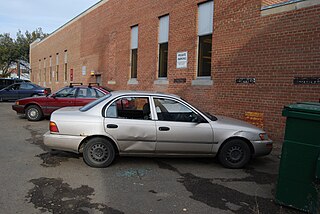
Motor vehicle theft is the criminal act of stealing or attempting to steal a motor vehicle. Nationwide in the United States in 2020, there were 810,400 vehicles reported stolen, up from 724,872 in 2019. Property losses due to motor vehicle theft in 2020 were estimated at $7.4 billion. There were 505,100 car thefts in the EU in 2019, a 43% decrease from 2008.
Entrapment is a practice in which a law enforcement agent or an agent of the state induces a person to commit a "crime" that the person would have otherwise been unlikely or unwilling to commit. It "is the conception and planning of an offense by an officer or agent, and the procurement of its commission by one who would not have perpetrated it except for the trickery, persuasion or fraud of the officer or state agent".

Carjacking is a robbery in which a motor vehicle is taken over. In contrast to car theft, carjacking is usually in the presence and knowledge of the victim. A common crime in many places in the world, carjacking has been the subject of legislative responses, criminology studies, and prevention efforts. Commercial vehicles such as trucks and armored cars containing valuable cargo are common targets of carjacking attempts. Carjacking usually involves physical violence to the victim, or using the victim as a hostage. In rare cases, carjacking may also involve sexual assault.

Art theft, sometimes called artnapping, is the stealing of paintings, sculptures, or other forms of visual art from galleries, museums or other public and private locations. Stolen art is often resold or used by criminals as collateral to secure loans. Only a small percentage of stolen art is recovered—an estimated 10%. Many nations operate police squads to investigate art theft and illegal trade in stolen art and antiquities.

A car chase or vehicle pursuit is the vehicular overland chase of one party by another, involving at least one automobile or other wheeled motor vehicle, commonly hot pursuit of suspects by law enforcement. The rise of the automotive industry in the 20th century increased car ownership, leading to a growing number of criminals attempting to evade police in their own vehicle or a stolen car. Car chases may also involve other parties in pursuit of a criminal suspect or intended victim, or simply in an attempt to make contact with a moving person for non-conflict reasons.

A police car is a ground vehicle used by police and law enforcement for transportation during patrols and responses to calls for service. A type of emergency vehicle, police cars are used by police officers to patrol a beat, quickly reach incident scenes, and transport and temporarily detain suspects, all while establishing a police presence and providing visible crime deterrence.

A fence, also known as a receiver, mover, or moving man, is an individual who knowingly buys stolen goods in order to later resell them for profit. The fence acts as a middleman between thieves and the eventual buyers of stolen goods who may not be aware that the goods are stolen.
In the United States, VIN etching is a countermeasure to motor vehicle theft, that involves etching a vehicle's VIN onto its windows to reduce the value of a stolen vehicle to thieves. The Federal Trade Commission includes VIN etching on a list of upsold services including extended warranties, service and maintenance plans, payment programs, guaranteed automobile or asset protection, emergency road service, and other theft protection devices, and warns consumers about the practice of upselling when buying a vehicle.

A chop shop is a business, often mimicking a body shop, that illicitly disassembles stolen motor vehicles and sells their parts. Chop shops are often linked to car-theft rings as part of a broader organized crime enterprise.

A Grand Theft Auto clone belongs to a subgenre of open world action-adventure video games, characterized by their likeness to the Grand Theft Auto series in either gameplay, or overall design. In these types of open world games, players may find and use a variety of vehicles and weapons while roaming freely in an open world setting. The objective of Grand Theft Auto clones is to complete a sequence of core missions involving driving and shooting, but often side-missions and minigames are added to improve replay value. The storylines of games in this subgenre typically have strong themes of crime, violence and other controversial elements such as drugs and sexually explicit content.
Property crime is a category of crime, usually involving private property, that includes, among other crimes, burglary, larceny, theft, motor vehicle theft, arson, shoplifting, and vandalism. Property crime is a crime to obtain money, property, or some other benefit. This may involve force, or the threat of force, in cases like robbery or extortion. Since these crimes are committed in order to enrich the perpetrator they are considered property crimes. Crimes against property are divided into two groups: destroyed property and stolen property. When property is destroyed, it could be called arson or vandalism. Examples of the act of stealing property is robbery or embezzlement.
Ernest Varacalli, or "Junior", is a New York mobster who belongs to the Genovese crime family, one of the five New York crime families. Varacalli has used as many as nine different aliases during his criminal career.

To Catch a Predator is an American reality television series in the television news magazine program Dateline NBC featuring confrontations of host Chris Hansen, partly filmed with a hidden camera, with adult men arriving at a sting house to have sex with a minor and typically being arrested as a result. The minors are adults impersonating underage persons in online chats.
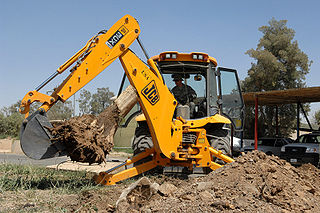
Construction equipment theft, is the criminal act of stealing or attempting to steal construction equipment, including all type of heavy equipments. Construction equipment theft has been recognized as a significant problem in the United States and elsewhere in the world, including Canada, Australia, Europe, and Japan.
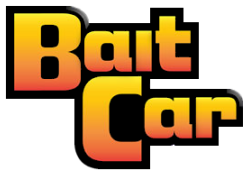
Bait Car is an American television series that aired on the truTV network. The show depicted police officers targeting criminals with a high-tech bait car, rigged with hidden cameras and radio trackers. Footage is shown from in-car cameras, police car dashcams, and film crews with the police officers. The show holds a TV-14 rating due to strong language, although most of the profanity is censored.
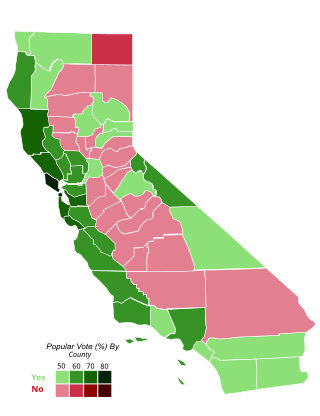
Proposition 47, also known by its ballot title Criminal Sentences. Misdemeanor Penalties. Initiative Statute, was a referendum passed by voters in the state of California on November 4, 2014. The measure was also referred to by its supporters as the Safe Neighborhoods and Schools Act. It recategorized some nonviolent offenses as misdemeanors, rather than felonies, as they had previously been categorized.
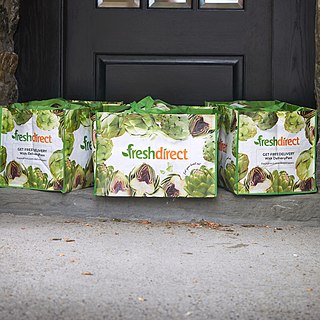
Package theft or cargo theft is the theft of a package or parcel. It can occur anywhere in the distribution channel.

California nut crimes refers to the organised theft of nuts in California. Reported cases of nut theft go as far back as 2006 with the worth of stolen nuts being millions of dollars. The thefts demonstrate a high level of sophistication, encompassing identity theft and a deep understanding of computer security and logistics.
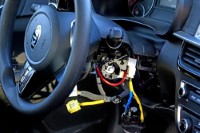
The Kia Challenge is a viral TikTok trend to which a series of motor vehicle thefts is attributed, targeting Kia and Hyundai vehicles in the United States manufactured between 2011 and 2021. The trend, which began in October 2022, has led to eight fatalities, according to the National Highway Traffic Safety Administration.
















